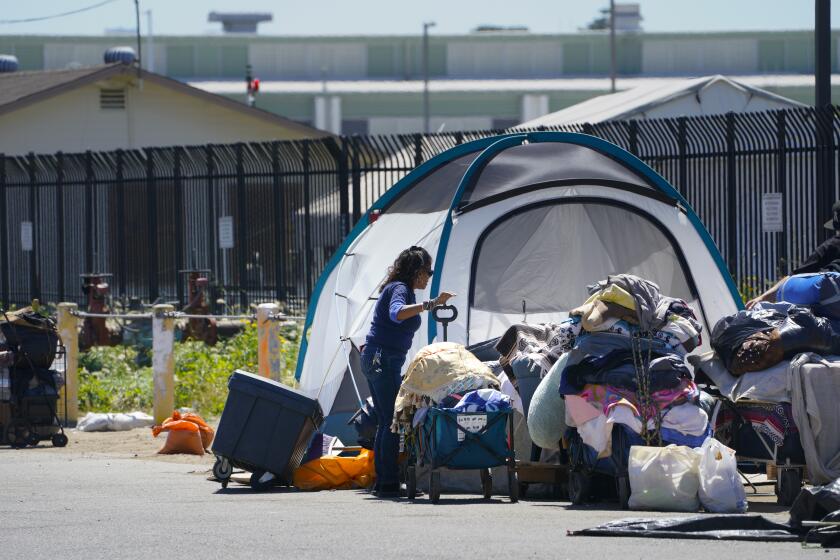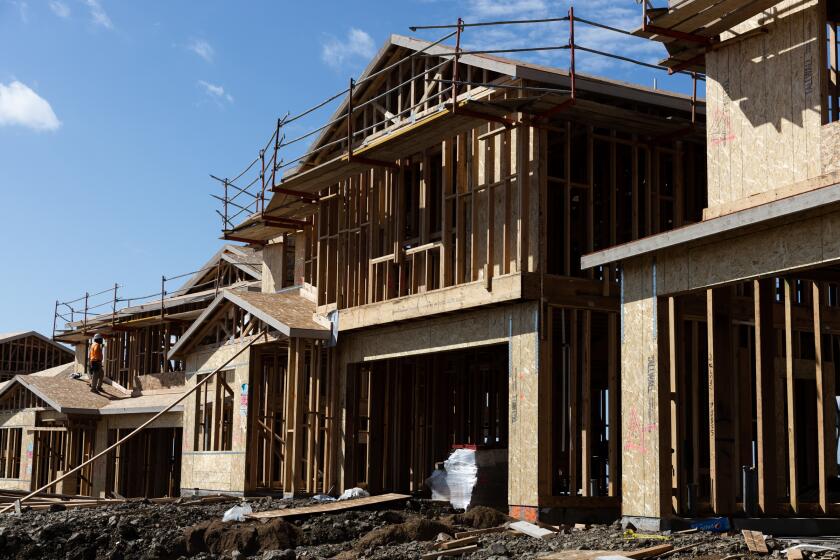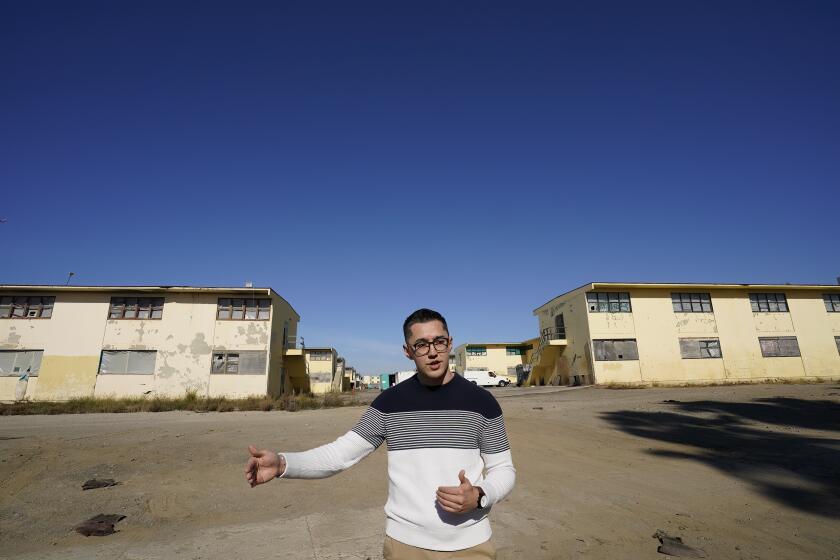Column: Report says San Diego now is nation’s least affordable metro area, surpassing San Francisco

Monthly analysis compares median home price with local incomes. Drop in S.F. housing prices made a difference.
The “San Diego discount” apparently still lives.
The term, which you don’t hear so much these days, suggests that pay here is comparatively less than elsewhere because people want to live in San Diego. It was often invoked in the sports world, particularly regarding the great Tony Gwynn, who remained a San Diego Padre his entire career even though he could have received more money signing on with another team.
The notion also was applied to San Diego at large, and sometimes was used interchangeably with the more familiar “sunshine tax” — meaning the cost of living, particularly housing, is higher in desirable places to live like San Diego.
Those, essentially, were the underlying factors in a housing-related survey that said San Diego had become the least affordable metropolitan area in the nation.
OJO Labs, a Texas-based digital home-buying platform that conducts the survey, draws its conclusions by analyzing housing prices and income across the country.
San Diego’s home prices aren’t as high as San Francisco’s, but neither is its household income. That combination pushed San Diego just ahead of its northern counterpart in OJO’s latest monthly ranking.
There are probably a million ways to slice and dice economic and cost-of-living data, so OJO’s survey isn’t the last word. But it provides a marker that drives home something just about everybody in San Diego County knows: It’s increasingly hard to afford to live here.
The rise in housing costs has been dizzying, putting houses and apartments out of reach for more and more people. A recent report showed inflation here was above the national average and among the highest anywhere in the country. Electricity and water rates are going up substantially, and then there’s the price of gasoline.
Nice places to live almost always cost more, but there’s the time-honored civic debate about at what point the high cost of living — along with increasing population and congestion — chips away at desirability.
Still, San Diego is cited as one of the healthiest, most beautiful and most fun cities in various surveys. The region’s biotechnology hub and tourist attractions like the San Diego Zoo are known throughout the world. So, there’s no shortage of positive attention that attracts people to come here.
The economics of staying aren’t so easy for many people.
OJO’s report said San Diego’s median home price rose 14.3 percent over the past year to $764,000, which brought the region’s “unaffordability score” — a ratio of median sold home price to median household income — to 8.1.
The survey noted that San Francisco still has the highest home prices of any metropolitan area in the United States — the median price for a home sold was $1,012,000, according to the January report. But that actually dropped 4.2 percent over the past year, bringing San Francisco’s score on the OJO scale to 7.9 percent, down from 9.2 the previous month.
The median household income in San Diego was $79,673 in 2019, according to the U.S. Census Bureau. In San Francisco, it was $112,449.
Rounding out the top five least-affordable metro areas were Los Angeles; Mobile, Ala./Pensacola, Fla; and Boise, Idaho.
San Diego wasn’t tops in inflation, but close, according to Phillip Molnar of The San Diego Union-Tribune. The county’s inflation rate was 8.3 percent in January, third-highest in the country behind Tampa, Fla., and Riverside. All were above the national average of 7.5 percent, which is the highest inflation rate in 40 years.
Molnar noted San Diego’s average annual inflation rate has been about 2.6 percent over the last 20 years.
Alan Gin, an economist at the University of San Diego, sounded a familiar theme.
“It’s just more expensive to live,” he told Molnar. “If workers’ wages are not keeping pace, the standard of living is declining.”
Gin expects inflation to subside as the economy gets back to normal and supply chain problems are resolved.
For now, pretty much everything costs San Diegans more. The biggest category for increases was electricity costs, which jumped 43.4 percent in a year.
Many customers have complained directly to San Diego Gas & Electric and on social media platforms about recent increases, according to the Union-Tribune’s Rob Nikolewski.
More complaints also are surfacing about the rising cost of water in San Diego County, where prices are projected to continue increasing well into the future — far outpacing Los Angeles and some other regions of the state.
Despite the financial pressures, San Diego appears to remain a relatively happy place. WalletHub produces an annual measurement of cities based on 31 indicators of happiness, ranging from rates of depression to income growth to amount of leisure time.
In 2021, San Diego ranked 26th on the happiness scale out of 182 cities. That was a drop from 18th in 2019. For perspective, Fremont, Calif., was at the top of the happiest list last year, and Plano, Texas, was ranked first in 2019.
A different kind of wellness index is published annually by the fitness technology platform Mindbody. This analysis doesn’t specifically include financial gauges. But it does consider stress levels along with how much residents drank, smoked, exercised, connected with family and community, and found spiritual fulfillment.
Among 50 U.S. cities, San Diego ranked third, after Los Angeles, with Miami on top, according to the annual survey released in January. That’s up from eighth in the previous year. This may suggest San Diegans were on a more even keel in the second year of the coronavirus pandemic.
According to the survey, San Diego had the highest percentage of residents who have a normal body mass index, as defined by the Centers for Disease Control and Prevention. But the survey attributes San Diego’s high rating “to much more than fitness. Over half of residents consume the recommended serving of fruits, vegetables, and water daily, receive regular medical checkups, feel connected to their neighbors, and get sufficient rest.”
Then there’s this: “Nearly 70% of residents also say they find time for play and having fun — the highest in the U.S.”
Now, that’s not a bad place to come out on top.
Get Essential San Diego, weekday mornings
Get top headlines from the Union-Tribune in your inbox weekday mornings, including top news, local, sports, business, entertainment and opinion.
You may occasionally receive promotional content from the San Diego Union-Tribune.












